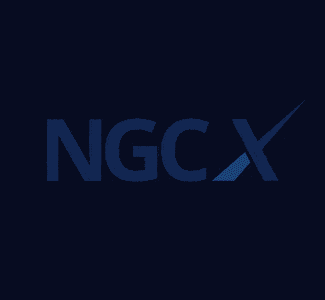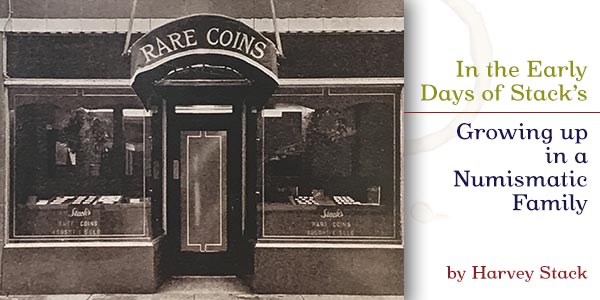
By Harvey Stack – Co-Founder, Stack’s Bowers Galleries …..
Benjamin and Norman Visit Stack’s
Benjamin and Norman Stack, brothers and my first cousins, were the sons of Joseph B. Stack, my father’s brother. Like me they were constant visitors to our store on Sixth Avenue.
Benjamin was Norman’s older brother by less than two years, and I, Harvey their cousin, was 19 days older than Norman. So for decades, Norman was always kidded as the youngest Stack.
Ben had an aggressive disposition, believing that by being older it necessarily followed that he was the smartest of the cousins, and consequently he often tried to dole out the small assignments that we were given to do. For example, sweeping the floor, washing the front window, polishing the glass on the showcase, taking out the rubbish, and so on. He made himself a leader and did only the important jobs, while Norman and I did the jobs that were considerably less popular. Even at a very young age he thought he could wait on trade, and he erred more than he accomplished.
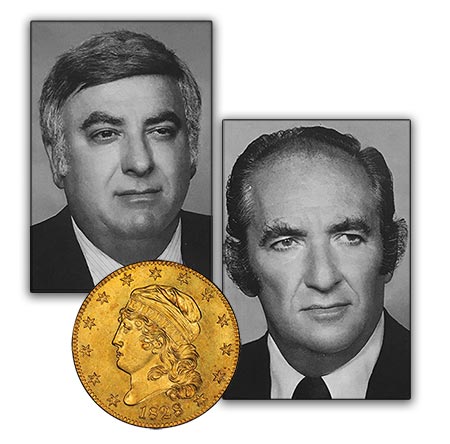
But he was there, so we let him.
The Stack’s Auction Sale business grew in popularity and attendance once we got underway in 1935. One of our early consignors, at least from the years between 1935 and 1938 was Hal Proskey, David Proskey’s son, who saw the advantage of selling at public auction and favored Stack’s with the job.
Within the first few years Stack’s held almost two dozen sales in our shop, attended by the active collectors and dealers who enjoyed coming to the auctions, buying what they could and also meeting up with friends. So popular were the early sales that many small dealers took advantage of the Stack’s public sales to offer their coins and currency to the collecting public.
Morton and Joseph were constantly pursuing consignments for their sales. In fact, the popularity of selling coins at public auction was such that they attracted the attention of the American Numismatic Association (ANA), who had planned a convention in New York in 1939. The reason New York City was selected was that the WORLD’S FAIR was about to be held in the city, and the ANA figured a larger number of collectors would be at the Fair that year, and that the convention would attract more collectors.
Stack’s proposed to the ANA that an additional attraction to their convention would be a Public Auction Sale. They agreed, and Stack’s was awarded the sale. This would be the first auction sale to be held in conjunction with an ANA convention.
It worked out well. Large numbers of collectors came to the convention because of three factors: A national convention in a great city, the 1939 World’s Fair going on at the same time, and a public auction sale of numismatics.
The convention was well situated in New York. It took place at the then-famous Pennsylvania Hotel on Eighth Avenue, which was directly across the street from the Pennsylvania Rail Station. This station had trains going from New York to all parts of the country, and was dominated by the services they offered from New England to the Southern States and from the West to the Mississippi. Everyone who traveled a good distance used the trains since no airplanes were in use by the general public to any great extent. So collectors came by train, walked across the street to the hotel, and were there for the ANA convention. It was natural to take advantage of the site for the sale, and Stack’s did just that.
The next major event in that period of time, was the acquisition of the George Clapp Collection, who was from Washington, DC. It was one of the most complete collections of U.S. coins, having virtually one each of all the dates and mints, many in outstanding condition. Mr. Clapp had bought Proof coins directly from the Mint each year, from 1880 to 1915, so each specimen was of the highest quality.
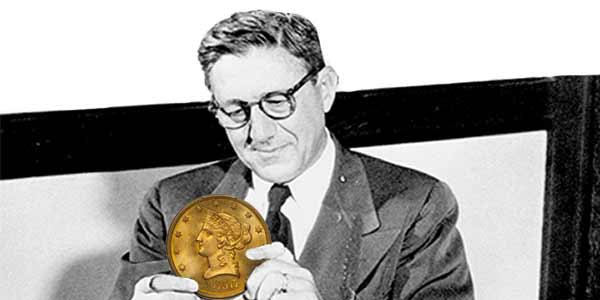 My father and uncle had during that period served a collector from Baltimore, Louis E. Eliasberg, a banker and bondsman for the whisky industry. We suggested to Eliasbberg that he consider buying the Clapp collection, intact, to further his goal of owning one each of all coins issued by the United States. In 1941 Stack’s made the deal with Eliasberg, and the Clapp Collection stayed with him till after his death and was sold in the early 1980s.
My father and uncle had during that period served a collector from Baltimore, Louis E. Eliasberg, a banker and bondsman for the whisky industry. We suggested to Eliasbberg that he consider buying the Clapp collection, intact, to further his goal of owning one each of all coins issued by the United States. In 1941 Stack’s made the deal with Eliasberg, and the Clapp Collection stayed with him till after his death and was sold in the early 1980s.
The deal was a World Happening Event. Nothing like this, with this level of completeness, had ever happened before. And since now it is no longer intact, the feat will not happen again.
We, the young ones, whenever we came to the store, were always asked by visitors: How was it that you were about when this historical event occurred? Our fathers told us what had happened, and when we were doing chores in the store we were all introduced to Mr. Eliasberg.
Eliasberg was but one of the great collectors of the 1940s that we met and helped out in one way or another. Others include John J. Pittman, Martin Kortjohn of ANA fame, and numerous collectors whosse names and collections are part of the 20th-century rebirth of the hobby.
Numismatics During World War II
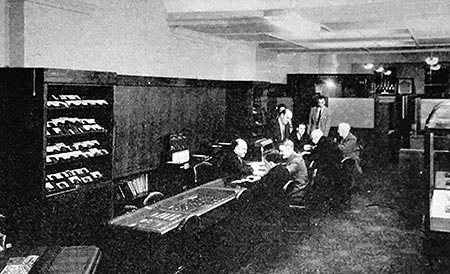
Unfortunately, in 1939 World War II broke out, and a goodly number of our friends and colleagues were drafted into the Armed Services.
We at Stack’s had to part with several important numismatists. Among the names that most will remember was John J.Ford , Jr., a young but promising numismatist; Cornelius Vermeule , a great student of the Classics who later was curator of the Boston Museum of Art; and Henry Grunthal, later in life the curator of the American Numismatic Society (ANS). Ben, Norman and myself were still in school as we had educational deferments.
Though we had specialists like James C. Risk (until he became the U.S. naval attache to Russia), Hans Holzer (an eccentric who was deferred because of health) and Edward May (who was too old to serve) during parts of the war, the need for more professional staff was there.
To gain the knowledge Ben, Norman and myself needed, we spent virtually all our spare time–including vacations from school–to help out in the shop.
Buying a Portion of the Col. Green Collection
By 1943, the Chase National Bank decided to dispose of another part of the Colonel E.H.R. Green collection of gold coins. Col. Green was such a profound buyer of anything he liked, especially during the early post-Depression era, that Chase Bank could not sell all that he had or it would kill the market, and they would be held responsible for what some considered “dumping” large lots on the market at one time.
When Chase got to sell some of the gold coins from the Green Estate, they offered all his Quarter Eagles (U.S. $2.50 gold, which was complete with few duplicates). A massive group of U.S. Half Eagles ($5.00 gold), almost two full sets, and virtually hundreds of specimens from the 1795 to 1838 period – plus a large group of Eagles ($10.00 gold) dated 1705 through 1907 and a full set of the Indian Head design (1907-1933) with many, many duplicates.
It took a while to get these coins re-sorted by date and grade, and to do something with the quantity we bought. So even the junior Stack’s were enrolled in the sort, where we learned about obvious varieties. Then we assisted in putting them into stock, which would also take lots of time and effort. We learned more about the series we worked on – and more about scarcity, rarity, and how to judge quality just from handling and examining all these coins – than we ever would have from books.
The Beginning of the Col. Green Sale: Gold Coins
Hans M.F. Schulman, who emigrated here from The Netherlands in the early part of World War II, met and later introduced us to the Private Secretary of the now famous King Farouk, who was an avid collector of coins (especially gold ones), postage stamps, unusual jewelry, precious stones, art and also women.
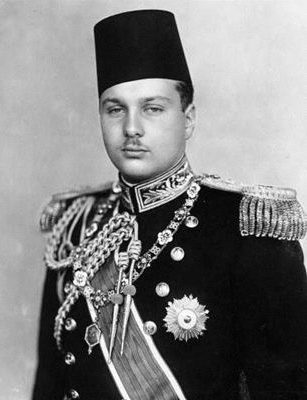
In 1944 the secretary told Hans that the King wanted to try to get a full collection of U.S. gold coins for, after all, the United States had helped with its armed forces to protect Egypt from the German Army. He felt that a collection of gold coins would show his respect for all the United States did for his nation. The Col. Green Gold Coin Collection had a complete set of $2.50 quarter eagle gold, a virtually complete set of $5.00 half eagle gold from 1795 to 1929, and also a virtually complete set of $10.00 eagle gold coins dated 1795 to 1933.
This was a perfect offering to sell to King Farouk.
We put together the sets, made an offer and sold intact the above three denominations to King Farouk. After Farouk’s abdication in 1952 and the sale of his numismatic holdings in 1954 at the hands of the military in Cairo, Egypt, the coins of Col. Green appeared again, sold in large lotsrather than single coins, and a number of dealers from the United States attended the sale and bought various portions of the lots that were be auctioned. Because of the size of each lot, in number and value, it was a great source of inventory for a dealer and too large for most collectors to participate in.
However, two well know collectors, John J. Pittman and Gaston DiBello did attend the sale and acquired a goodly number of coins they each needed for their collections. Both the Pittman collections and the DiBello collection were sold later on at public auction in the United States.
In 1945 another new collector entered the field: Clifford T. Weihman, the largest importer of olive oil in America. He had decided to expand his new collection of U.S. gold coins after getting what he wanted to build a collection of foreign gold coins.
We were able to show him (also from the Col. Green Collection) an incomplete set of U.S. $5.00 Gold 1795 to 1929 and a good collection of $10.00 gold 1795 to 1933, which were the second run Stack’s had constructed for the original purchase of gold coins from the Green Collection.
After we made these two major sales to Farouk and Weihman, we still had in our inventory a massive selection of dates and mints of the $5.00 and $10.00 gold, which we offered to the public at private sale and public auction.
* * *




